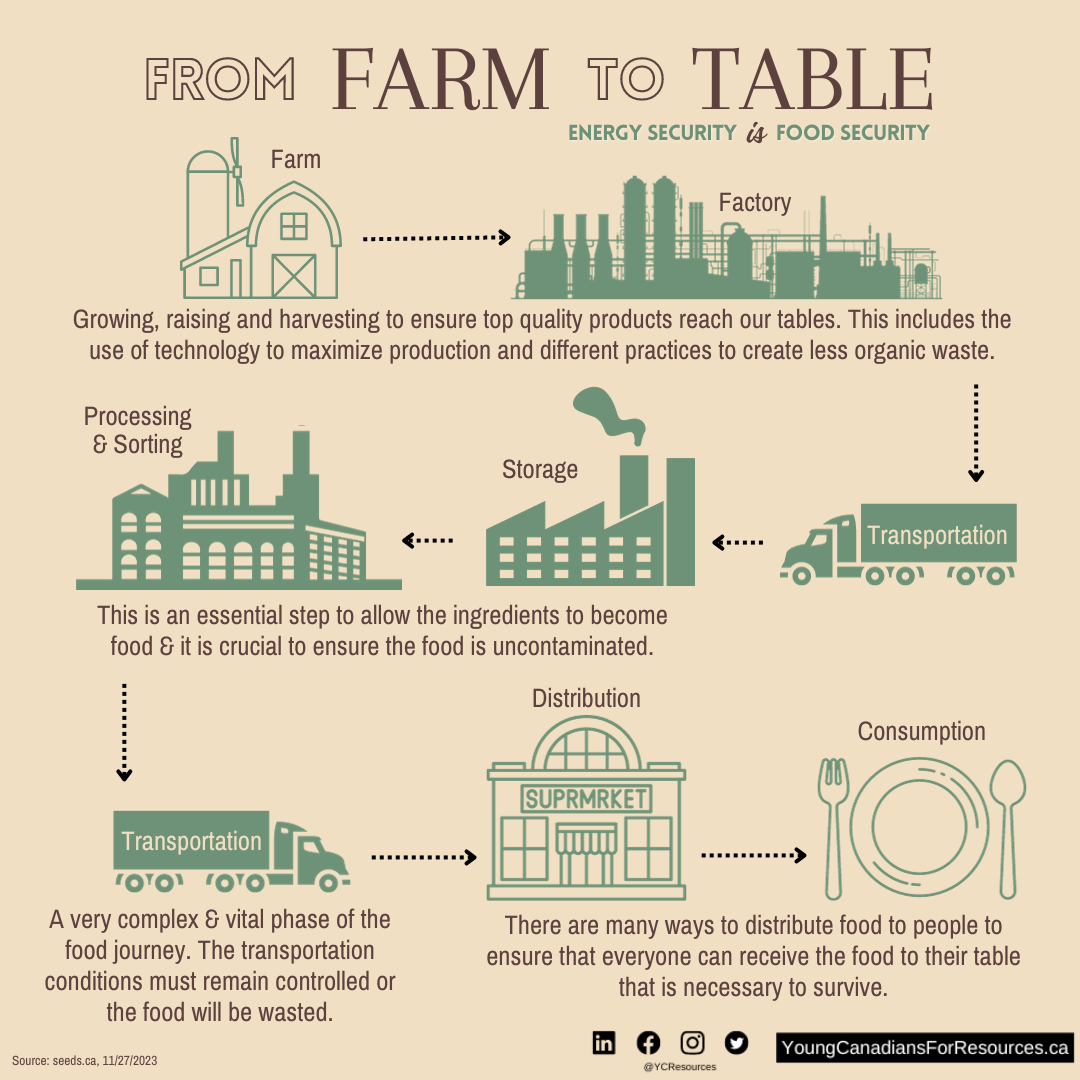William Diaz-Berthiaume – November 29, 2023
Have food on your table today? Thank Canadian farmers… and oil & gas workers
Canadian food needs Canadian fuel.

In the hustle of our daily lives as students and young professionals, we often take for granted the availability of food on our tables.
Yet, what often goes unnoticed is what lies behind this fundamental aspect of our lives.
While it is undoubtedly crucial to be thankful for the hardworking farmers who cultivate the fruits of the land, it’s equally important to acknowledge another indispensable sector that contributes to our domestic food security and availability – the Canadian energy sector.
“From grain farms to chicken barns, natural gas helps farmers thrive,” the Canadian Energy Centre wrote in March 2023. They could not be more right.
One of the main food-related issues students have is food costs. The price of food has dramatically increased in recent years.
Limited supply, as demand continues to grow, leads to higher prices. Increased supplies will help reduce the cost of food. However, meeting the high demand with increased supply is not that simple.
Our country’s colder climate increases the challenge of food production for the hardworking farmers who help keep our country running. As Chris Allam, the COO at Allam Farms Partnership, told the Canadian Energy Centre, “Being as we are far north, cold can help a farmer preserve the grain, but in order to deliver it to elevators and overseas customers, it can’t arrive in a moist state.”
Allam here highlights beautifully farmers’ need for reliable sources of energy to keep their farms running and feed Canadians. When it comes to reliable sources of energy, we all know that Canada has some of the cleanest, most responsibly-produced and sustainable sources of energy, from oil and natural gas to nuclear energy and beyond.
In 2000, a study commissioned by Natural Resources Canada revealed that Alberta farms collectively utilized 1813 gigawatt hours (GWh) of electricity annually. To put this in context, 1 GWh is equivalent to 1,000,000 kilowatt hours (kWh), sufficient to sustain 88 Canadian homes for a year. Furthermore, during the same period, Alberta farms consumed 6,898 terajoules (TJ) of natural gas.
A closer examination of the data by farm type revealed that cattle farms emerged as the predominant consumers of both electricity and natural gas.
Another important use of natural gas to help farmers is in our fertilizer.
Natural gas serves a dual role in the agricultural sector when it comes to fertilizer – not only is it a key component in the manufacturing process of fertilizers, but increasingly, fertilizers themselves are crafted from anhydrous ammonia, a product of natural gas. Anhydrous ammonia, rich in nitrogen, stands as a crucial element in helping farmers keep their soil healthy and full of nutrients.
Then, the food produced by our hard-working Canadian farmers must be transported to local grocery stores, making it readily available for Canadians from coast to coast.
How is the food transported? Trucks, planes, and other transportation methods that use fuel made from oil & gas. Canadian farms work hand-in-hand with hardworking Canadian truckers to ensure you can have food on your table, further strengthening the connection between Canadian food and Canadian fuel.
Strengthening our fuel supply sector will help strengthen our food sector. By making it cheaper and easier for farmers to use our domestic, responsibly-produced and more reliable sources of natural gas, we break farmers’ dependency on volatile, less responsible and unreliable foreign markets.
The world needs more Canadian agriculture. Canadians should support the expansion of our own domestic food sector instead of foreign markets.
And to do so, Canadian farmers and food producers need Canadian fuel.
